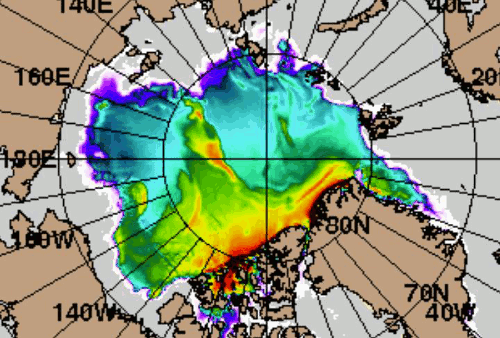The US Navy is forecasting that the ice edge in the Chukchi and Laptev Seas will push to the north, with little change in the Beaufort or East Siberian Seas.
Disrupting the Borg is expensive and time consuming!
Google Search
-
Recent Posts
- Fact Checking The New York Times
- New Visitech Features
- Ice-Free Arctic By 2014
- Debt-Free US Treasury Forecast
- Analyzing Big City Crime (Part 2)
- Analyzing Big City Crime
- UK Migration Caused By Global Warming
- Climate Attribution In Greece
- “Brown: ’50 days to save world'”
- The Catastrophic Influence of Bovine Methane Emissions on Extraterrestrial Climate Patterns
- Posting On X
- Seventeen Years Of Fun
- The Importance Of Good Tools
- Temperature Shifts At Blue Hill, MA
- CO2²
- Time Of Observation Bias
- Climate Scamming For Profit
- Climate Scamming For Profit
- Back To The Future
- “records going back to 1961”
- Analyzing Rainfall At Asheville
- Historical Weather Analysis With Visitech
- “American Summers Are Starting to Feel Like Winter”
- Joker And Midnight Toker
- Cheering Crowds
Recent Comments
- Bob G on Fact Checking The New York Times
- Bob G on Fact Checking The New York Times
- Bob G on Fact Checking The New York Times
- Bob G on Fact Checking The New York Times
- arn on Fact Checking The New York Times
- conrad ziefle on Fact Checking The New York Times
- arn on Fact Checking The New York Times
- Bob G on Fact Checking The New York Times
- conrad ziefle on Fact Checking The New York Times
- Bob G on Fact Checking The New York Times



Steve, just a quick comment…looking at the AMSR-E sea ice concentrations as well as the MODIS imagery in the Beaufort Sea, it’s clear that the model is missing the low sea ice concentrations in the Beaufort Sea. Also, the tongue of old ice that stretches towards Siberia seems to be missing in the model. But the model does pick up other features observed in the passive microwave and visible imagery. Will be interesting to see how much more ice loss will occur in the Beaufort and Chukchi seas as those regions have very diffuse ice cover at the moment.
Well I was going to comment but Julienne just said it better than I could whilst also spotting the missing tongue of old ice which I missed, she is obviously more highly paid than me 😀 ( I get zero). You can see the Beaufort here on the composite here
http://www.arctic.io/observations/
looking very dispersed. In fact it outdates the most recent NSIDC monthly update which shows still old ice there. It won’t be there next year I don’t think. Julienne care to comment?
I think there is a low over the Beaufort at the moment so that won’t encourage ice melt though apart from I guess the right of it due to southerly windstowards Greenland where there is not too much to melt as a lot of islands.
In my opinion the ice is ripe for melting but current weather conditions are hindering it, hence it is hard to say what will happen for the rest of the season. If we get a big High slap over the Beaufort it will start making rapid reductions.
Also is the Greenland sea full of ice because it is cold or because more ice is comming down that way?
Andy
The wind blows from the north, and the ice spreads. If it blows from the south it compacts. ZZZZzzzzzz
Andy, I don’t yet have an updated ice age map yet to see how much of the old ice melted out in the Beaufort since our blog posting, but visually comparing the images I would say more of it has melted out. We will be looking at the ice motion vectors for the next blog post so should know more soon about what is going on in the E. Greenland Sea and how much divergence has been happening the last couple of weeks.
Somewhat off-topic, but given your interest in the history of Arctic Sea Ice cover Julienne, I thought this study might be worthy of your attention :
http://news.ku.dk/all_news/2011/2010.8/arctic_sea_ice/
Apologies if you’ve already seen it.
Thanks, yes I’ve seen it and have previously talked with the authors at conferences when they were talking about using driftwood to unravel past ice conditions. I think paleoclimate work is fascinating and valuable.